Top Game of Thrones filming locations in Northern Ireland are:
-
The Dark Hedges (Kingsroad)
-
Ballintoy Harbour (Pyke and the Iron Islands)
-
Castle Ward (Winterfell)
-
Tollymore Forest Park (the Haunted Forest)
-
Cushendun Caves (Melisandre’s shadow birth)
-
Murlough Bay (Stormlands coast)
-
Downhill Strand and Mussenden Temple (Dragonstone beach)
-
Larrybane Quarry (Renly’s tourney camp)
-
Magheramorne Quarry (Castle Black and Hardhome)
-
Pollnagollum Cave
These thrones film locations are a must-see highlight for anyone planning an Ireland vacation, offering fans the chance to explore the iconic landscapes and castles featured in the series.
Strolling these sets means crunching gravel beneath the beeches of the Kingsroad, breathing salt spray beside Ironborn longboats, and tracing direwolf pawprints across Winterfell’s courtyard. I still feel a shiver when I step into Castle Ward’s courtyard, half-expecting the Stark banner to flutter overhead and a rambunctious direwolf pup to bound past my boots.
Why Northern Ireland Became the Home of Game of Thrones?
Northern Ireland became the home of Game of Thrones because it offered the perfect blend of rugged landscapes, medieval castles, and untouched coastlines. Its dramatic scenery made it easy to bring Westeros to life. Northern Ireland's famous landmarks and natural beauty, such as the Fairhead Cliffs, Dunluce Castle, and Portstewart Strand, were key reasons for its selection as a filming location. From the haunting Dark Hedges to the windswept cliffs of Ballintoy, each location added authenticity to the fantasy world. The region’s ever-changing weather also created a moody atmosphere that suited the show’s dark tone. These natural features required little CGI, keeping production costs down.
Another major reason was the availability of established filming infrastructure. Titanic Studios in Belfast provided a reliable base for large indoor sets, like the Throne Room and the Great Hall of Winterfell. Northern Ireland Screen offered generous tax incentives that attracted HBO. Local talent—from actors to set builders—was skilled and cost-effective. All of this, combined with political support, made Northern Ireland the ideal long-term filming hub for one of television’s biggest epics.
Game of Thrones Filming: Behind the Scenes in Northern Ireland
Northern Ireland’s stunning landscapes and rich history made it a prime location for Game of Thrones filming. The production team chose various locations across the region to represent different parts of the Seven Kingdoms, including the Haunted Forest, the Iron Islands, and King’s Landing. One of the most iconic locations is Castle Ward, a 16th-century tower house in County Down, which served as the prime location for Winterfell, the ancestral home of House Stark. The ward family, who owned the estate, played a significant role in the show’s production, allowing the team to film key scenes, including King Robert Baratheon’s arrival at Winterfell. The Dark Hedges, a stunning avenue of beech trees in County Antrim, was another key location, representing the King’s Road, a major highway in the Seven Kingdoms.
The show’s creators were drawn to Northern Ireland not only for its dramatic coastlines and ancient forests but also for its authentic medieval architecture and welcoming local communities. Many of the most iconic locations, such as the haunted forest in Tollymore Forest Park and the windswept cliffs of the Iron Islands, required little set dressing to transform them into the world of Westeros. The region’s natural beauty, combined with the historic tower house at Castle Ward and the atmospheric beech trees of the Dark Hedges, helped create some of the most memorable and visually stunning scenes in Game of Thrones. For fans, visiting these key sites is like stepping behind the scenes of television history, where the magic of the Seven Kingdoms was brought to life.
Top Game of Thrones Filming Locations in Northern Ireland
Top Game of Thrones filming locations in Northern Ireland bring the epic world of Westeros to life with real landscapes that feel as dramatic as the series itself. These iconic sites were chosen for their rugged beauty, haunting atmosphere, and timeless character. From eerie coastlines to ancient castles, Northern Ireland provided the perfect backdrop for many unforgettable scenes in the show, including King's Landing, one of the most significant Game of Thrones locations. Fans can walk the same paths as Jon Snow, Arya Stark, and the Greyjoys, stepping directly into the fantasy world they know from the screen. These places are not just settings — they are characters in their own right.
Introduction to Game of Thrones
Game of Thrones, the hit HBO series, has captivated audiences worldwide with its intricate storyline, complex characters, and breathtaking landscapes. Northern Ireland, with its diverse and spectacular scenery, played a significant role in bringing the world of Westeros to life. From the rugged coastlines of County Antrim to the rolling hills of County Down, Northern Ireland’s unique landscapes made it an ideal location for filming many iconic scenes. In this guide, we will explore the top Game of Thrones filming locations in Northern Ireland, including Castle Ward, Tollymore Forest Park, and the Dark Hedges, and provide tips on how to plan your trip to these incredible destinations.
Whether you’re a die-hard fan or simply love exploring places with cinematic history, Northern Ireland’s thrones filming locations offer a chance to step into the fantasy world of Westeros. Walk through the enchanting forest trails of Tollymore Forest Park, stand beneath the haunting beech trees of the Dark Hedges, or visit Castle Ward, the real-life Winterfell. Each filming location is set against a backdrop of spectacular scenery, making your journey through Northern Ireland as memorable as the show itself. Get ready to discover the magic behind Game of Thrones filming and see why these landscapes became the heart of the Seven Kingdoms.
The Dark Hedges: The Kingsroad’s Iconic Avenue
The Dark Hedges is one of the most famous Game of Thrones filming locations in Northern Ireland. It was used as the Kingsroad, the longest and most dangerous road in Westeros. In the show, young Arya Stark travelled this path with Yoren, Gendry, and Hot Pie in Season 2 while fleeing King’s Landing. The avenue of beech trees forms a haunting, natural tunnel. Their twisted trunks and interlocking branches create an eerie yet magical effect. This visual made it perfect for the fantasy series.
-
Located near Ballymoney, County Antrim
-
Planted by the Stuart family in the 18th century
-
Inspired by Gracehill House, the historic estate at the end of the avenue
-
Instantly recognizable to any Game of Thrones fan
-
A top spot for photos and tours
The Dark Hedges draws thousands of visitors each year. Fans walk the same road Arya did and experience the chilling atmosphere of the Kingsroad. The beech trees were originally planted to impress visitors approaching Gracehill House, making a grand and memorable entrance. The trees are now protected as part of Northern Ireland’s heritage. While vehicle access is restricted, pedestrian visits are welcome. The site is a must-see on any Game of Thrones tour. It captures the blend of fantasy and real-world beauty that defines the series.
Dunluce Castle: Pyke, Home of House Greyjoy
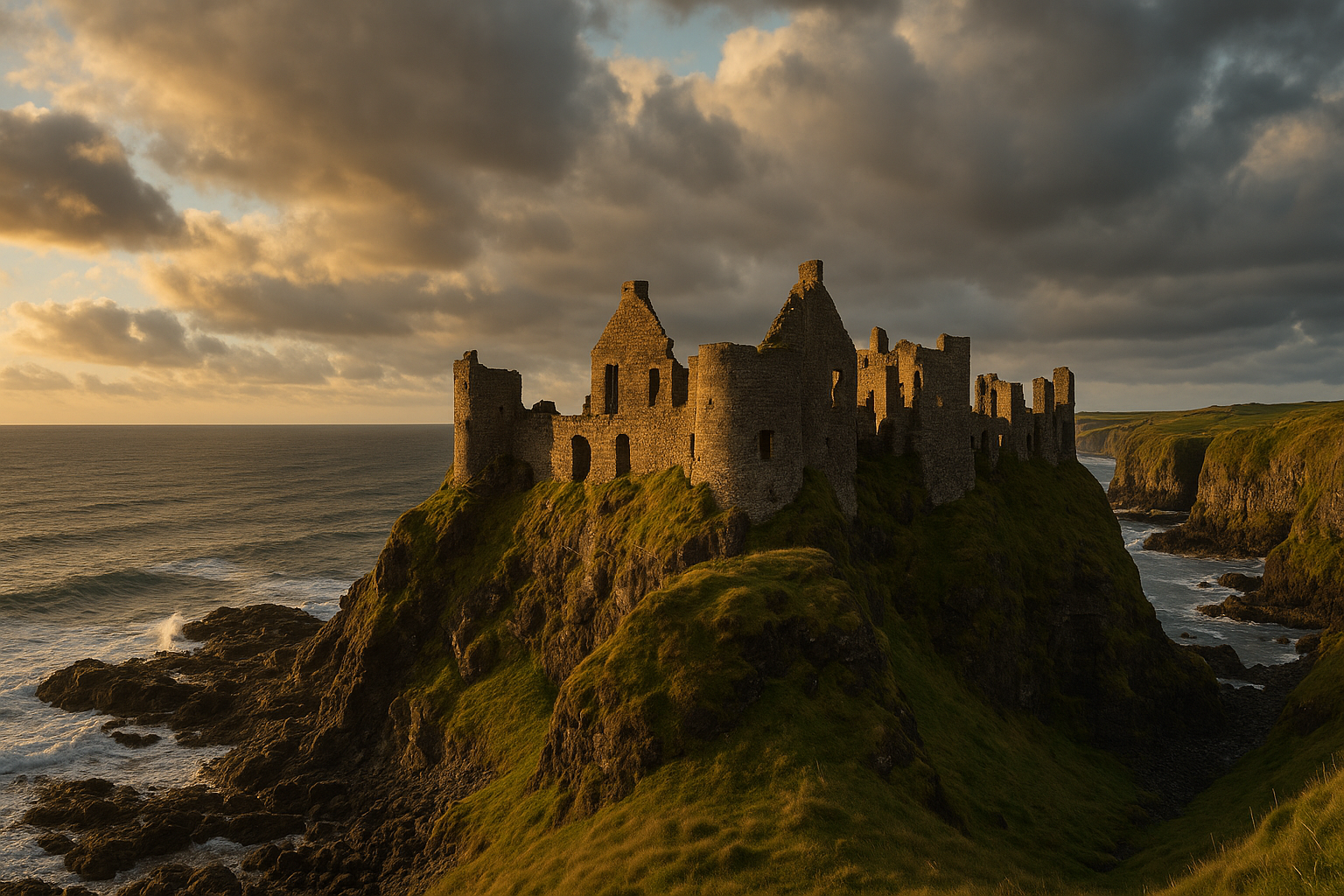
Dunluce Castle is one of the top Game of Thrones filming locations in Northern Ireland. It served as the real-world backdrop for Pyke, the seat of House Greyjoy in the Iron Islands. The dramatic ruins of the castle sit on the edge of a cliff in County Antrim, surrounded by rough seas and steep drops. Its harsh landscape mirrors the rugged and unforgiving nature of the Ironborn. The castle’s medieval structure and stormy setting made it the perfect choice for the gloomy home of Balon and Yara Greyjoy. Legend has it that in 1639, the castle kitchens collapsed into the sea during a stormy night, adding to its dark and atmospheric history.
-
Located in County Antrim along the Causeway Coastal Route
-
Perched on a steep basalt cliff above the North Atlantic Ocean
-
Used in exterior shots of Pyke in Season 2 and beyond
-
Close to other notable sites like the Giant’s Causeway and Ballintoy Harbour
-
Best visited at sunset for moody, cinematic views
Visitors can walk around the castle ruins and see where scenes were brought to life. Interpretive boards explain the real history alongside its TV fame. Although CGI enhanced some parts of Pyke in the show, Dunluce’s real location was used for important establishing shots. The sense of isolation and the sound of crashing waves give fans a true feel of the Iron Islands. Dunluce Castle remains a must-see for any Game of Thrones location tour.
Cushendun Caves: The Stormlands’ Shadowy Secrets
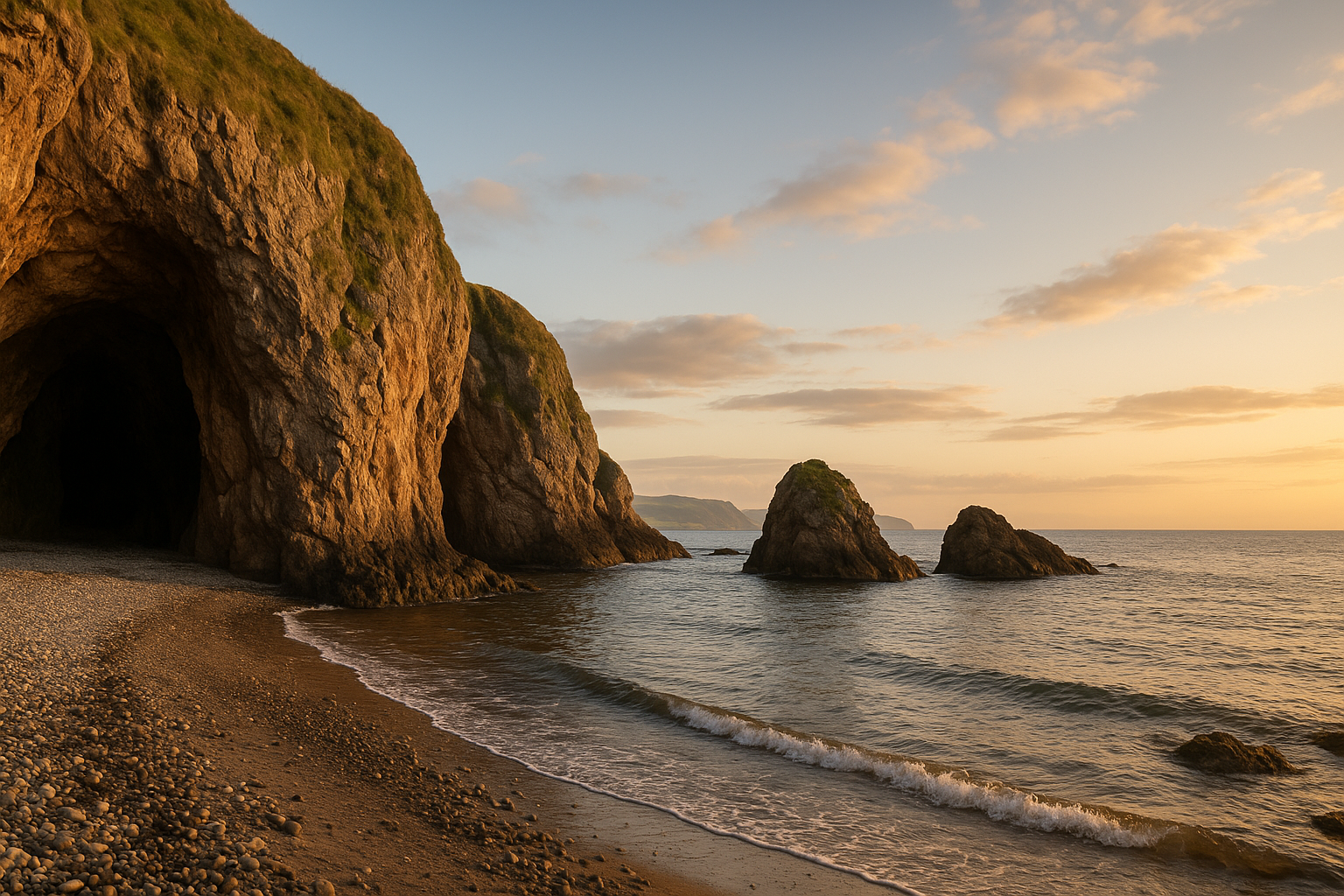
Cushendun Caves is one of the most dramatic Game of Thrones filming locations in Northern Ireland. Tucked along the Antrim coast, these ancient sea caves appeared in Season 2 as the Stormlands. It is here that Melisandre gave birth to the terrifying shadow baby. The eerie, natural rock formations and dim lighting made it the perfect place to film this dark and mysterious scene. Fans will instantly recognize the haunting atmosphere captured in the show.
Why Cushendun Caves stands out:
-
Filming site for Melisandre’s shadow birth in Season 2
-
Doubled as part of the Stormlands
-
Easily accessible coastal location
-
Unique, natural cave structures
-
A fan-favorite spot for GoT tours
These caves are more than 400 million years old and lie just a short walk from the village of Cushendun. Their raw, untouched beauty makes them ideal for fantasy storytelling. While small in size, the caves hold a powerful presence on screen. Visitors can explore the exact spot where one of the show’s most chilling moments took place. This location blends fantasy with nature in a truly unforgettable way.
Ballintoy Harbour: Lordsport and the Iron Islands
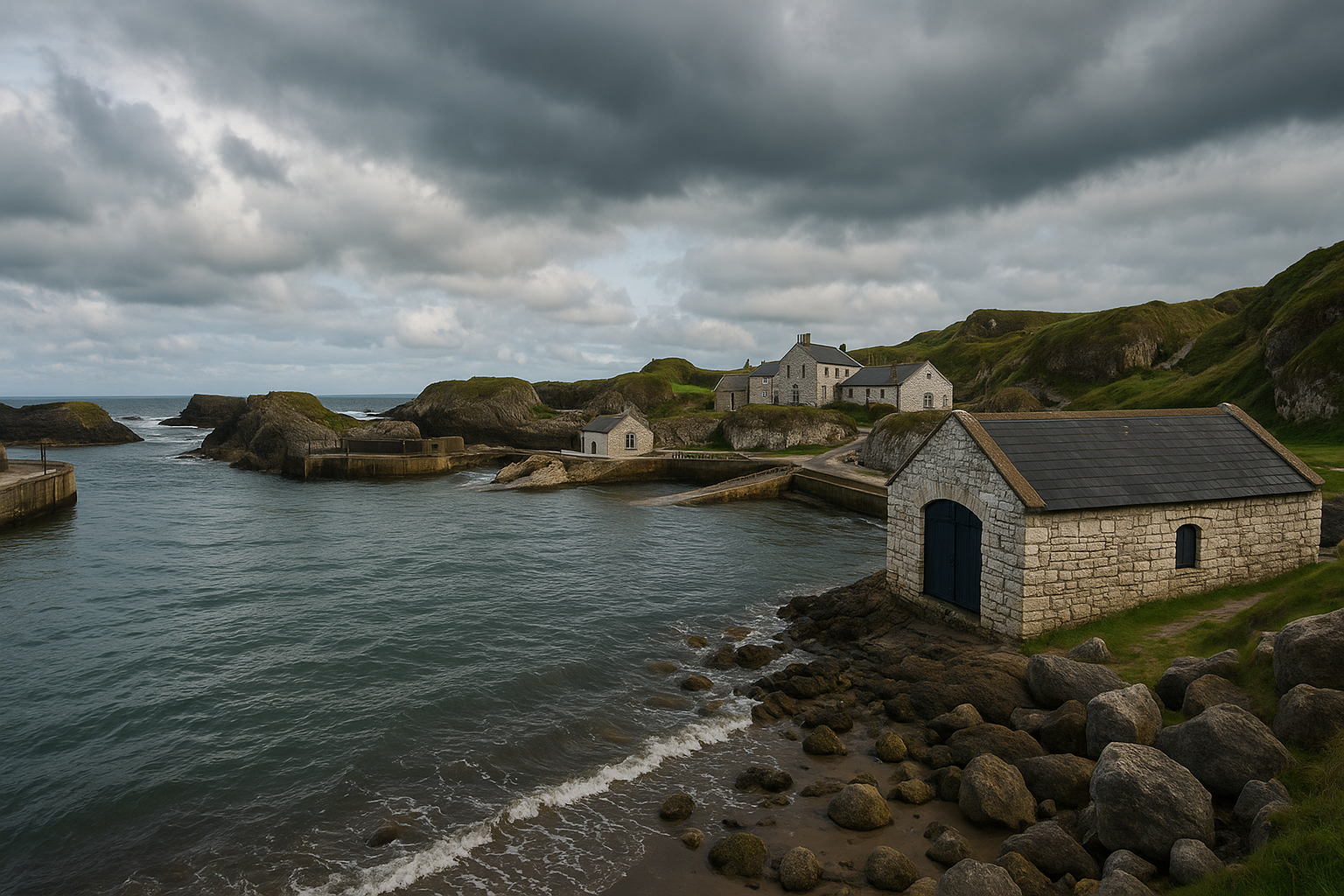
Ballintoy Harbour served as the backdrop for Lordsport and the Iron Islands. This rugged harbour is located on the Causeway Coast and was transformed into the stronghold of House Greyjoy. The jagged cliffs, stone quays, and wild seas made it the perfect setting for Pyke, the capital of the Iron Islands. The production team used minimal CGI here, relying instead on the raw beauty of the Northern Irish coastline. From Ballintoy Harbour, Sheep Island is a notable landmark visible in the distance, adding to the area's scenic and historic features. The scenes of Theon Greyjoy’s return to the Iron Islands were filmed right at Ballintoy.
Key highlights from Ballintoy Harbour:
-
Lordsport scenes with Theon Greyjoy
-
Arrival and departure of Ironborn ships
-
Rugged coastline that matches Iron Islands lore
-
Real fishing harbour still in use today
Ballintoy is not just a filming location—it’s a must-visit site for Game of Thrones fans. The area is easily accessible and offers panoramic views of the Atlantic. Many visitors recognize the exact spots where iconic scenes were shot. The harbour still feels like part of Westeros, especially on stormy days when waves crash against the rocks. Visiting Ballintoy gives fans a real sense of the Ironborn way of life.
Castle Ward: The Real Winterfell
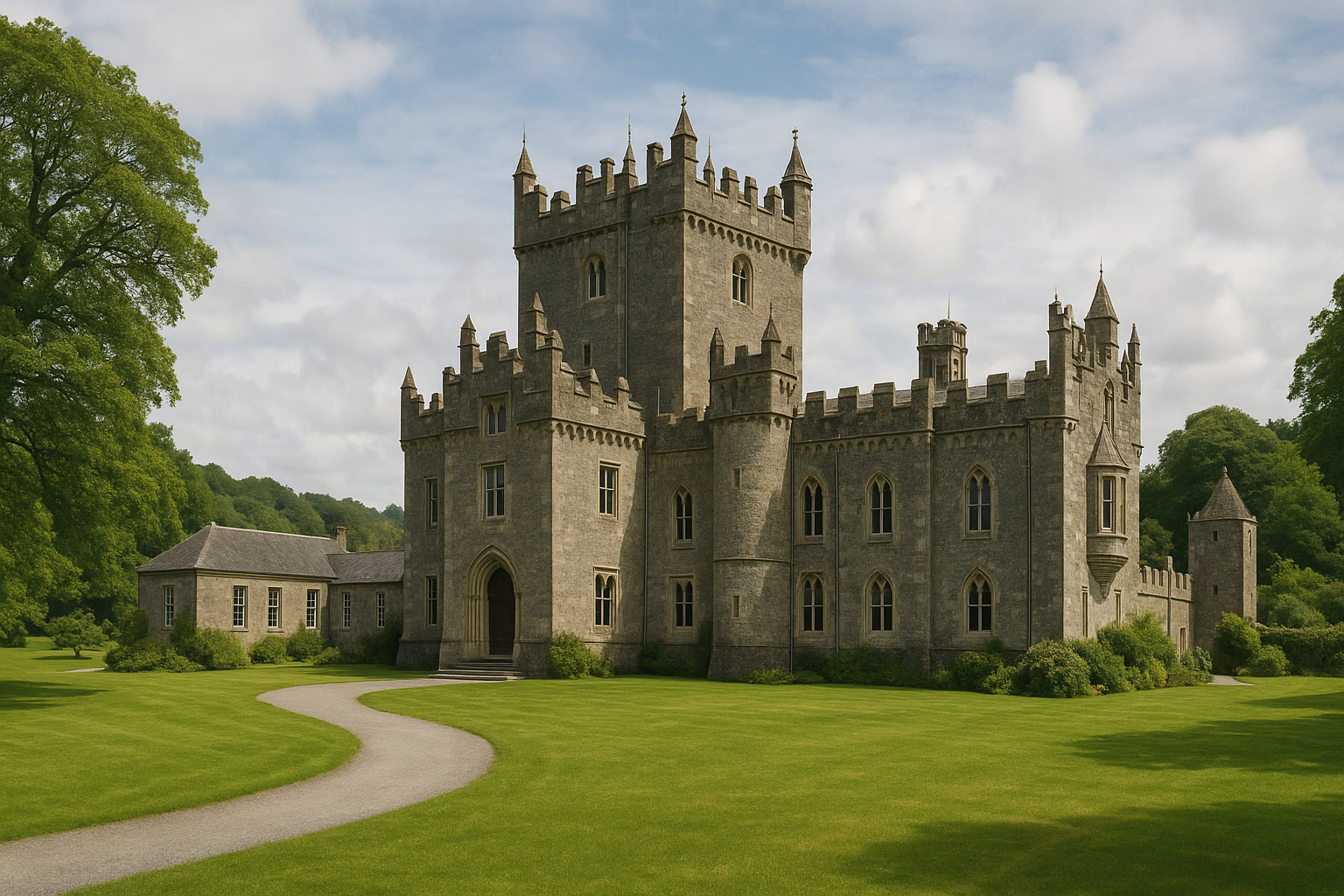
Castle Ward is one of the top Game of Thrones filming locations in Northern Ireland. It served as the iconic backdrop for Winterfell, the ancestral home of House Stark. Located in County Down, this 18th-century estate features sprawling grounds, stone walls, and a grand courtyard that perfectly matched the Stark stronghold. The production crew transformed the area with CGI and set design, but the core layout of Castle Ward remains instantly recognizable to fans. Visitors can explore the exact spots where Jon Snow, Arya Stark, and others trained and prepared for battle.
Key highlights include:
-
The courtyard where Bran practiced archery
-
The stable yard where key Stark family scenes were shot
-
The tower house featured in early Winterfell episodes
Today, Castle Ward offers immersive Game of Thrones experiences. You can dress in Stark costumes, try archery in the same courtyard, or cycle along trails used in the show. The surrounding forest park was also used in scenes featuring the direwolves. Castle Ward’s real-world charm and strong link to the series make it a must-visit for any Game of Thrones fan.
Tollymore Forest Park: The Haunted Forest
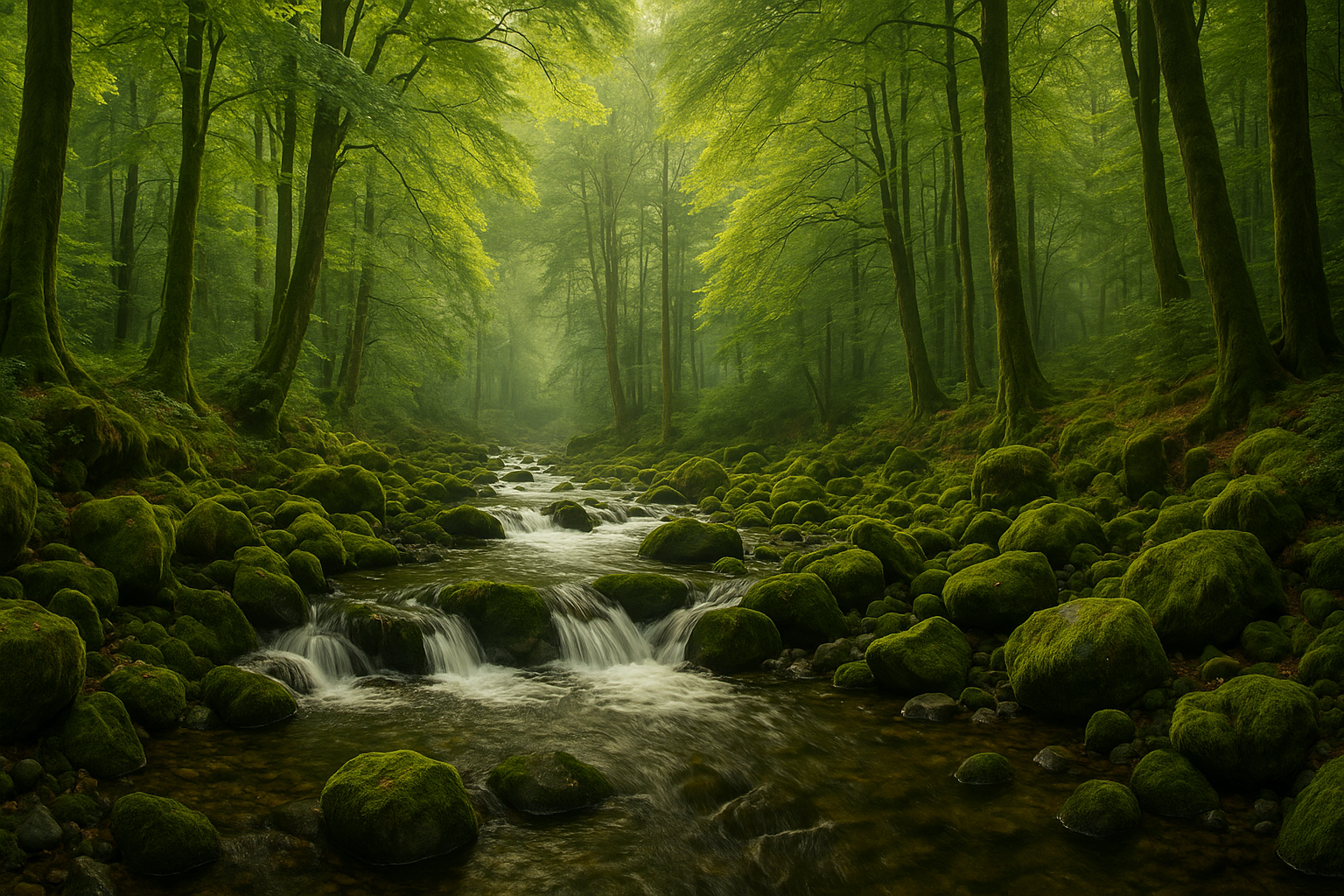
Tollymore Forest Park is Northern Ireland's first state forest park and a protected state forest park, making it a notable and accessible outdoor attraction. It is one of the top Game of Thrones filming locations in the region. The park was used as the eerie backdrop for the Haunted Forest, where the Night’s Watch first encounters the White Walkers, highlighting its strong connection to the Night's Watch in the series. Located at the foot of the Mourne Mountains, the forest’s dark trails, ancient trees, and rocky outcrops perfectly match the show’s haunting atmosphere.
Key scenes filmed here include:
-
The discovery of the direwolf pups
-
The opening scene of Season 1 with the White Walkers
-
Jon Snow and other rangers riding through the forest
The park’s dense woodland and twisting paths bring the mystery and danger of the North to life. It is open to the public, making it easy for fans to walk the same paths as their favorite characters. With moss-covered stones and trickling streams, it feels like stepping into Westeros.
County Antrim Locations: A Regional Guide to Westeros
County Antrim is a treasure trove for Game of Thrones fans, offering some of the most iconic thrones filming locations in Northern Ireland. The region’s dramatic landscapes and enchanting forests have become synonymous with the world of Westeros. The Dark Hedges, with its tunnel of iconic beech trees, is not only one of the most photographed natural phenomena in Northern Ireland but also a must-see for anyone seeking the magic of the Kingsroad. This enchanting forest avenue, planted centuries ago, creates an atmosphere that feels straight out of a fantasy novel.
Traveling along the North Antrim Coast, you’ll find Ballintoy Harbour, a picturesque fishing village that doubled as the Iron Islands. Here, the rugged coastline and wild Atlantic waves set the stage for Theon Greyjoy’s return to his ancestral home. Just a short drive away, the haunting ruins of Dunluce Castle perch dramatically on a basalt outcrop, inspiring the formidable Castle of Pyke, seat of House Greyjoy. Each of these filming locations offers visitors a chance to immerse themselves in the world of Game of Thrones, surrounded by the natural beauty and history that make County Antrim a highlight of any Northern Ireland adventure.
Other Must-See Game of Thrones Filming Locations in Northern Ireland
Other must-see Game of Thrones filming locations in Northern Ireland include many hidden gems scattered across the region. These sites brought Westeros to life, offering dramatic coastlines, misty valleys, and ancient ruins that perfectly fit the show’s epic fantasy world. Each location was carefully chosen for its raw beauty and cinematic impact. From windswept cliffs to quiet abbeys, these spots played host to some of the series' most iconic moments. They are not just beautiful—each holds a story from the Seven Kingdoms.
Murlough Bay
Murlough Bay is one of the most stunning and remote Game of Thrones filming locations in Northern Ireland. It was used in Season 2 and Season 3 as part of the Iron Islands. This is where Theon Greyjoy rides on horseback with his sister Yara, and where Davos Seaworth is shipwrecked after the Battle of Blackwater Bay. The rugged cliffs, sweeping sea views, and quiet isolation made it a perfect setting for the moody, dramatic tone of the show. You can reach the bay by a scenic coastal drive, followed by a short walk down to the shore.
Key highlights
-
Theon and Yara's ride scene
-
Davos' shipwreck site
-
Dramatic cliffside views of the Irish Sea
-
Remote, peaceful atmosphere
This location is near Ballycastle on the Causeway Coastal Route. It is a must-visit for fans wanting to step into the world of Westeros. The landscapes are unchanged since filming, giving you the feeling of walking through the Iron Islands yourself. The area is also known for its rich history and natural beauty, making it worth a stop even beyond its screen fame. Bring good shoes, as the terrain can be uneven.
Fair Head
Fair Head is one of the must-see Game of Thrones filming locations in Northern Ireland. This dramatic cliffside served as the backdrop for Dragonstone in Season 7. Its rugged landscape and sweeping sea views make it instantly recognizable. The towering cliffs rise over 600 feet above the Atlantic, creating a striking setting for many key scenes. In the show, it’s where Jon Snow first meets Daenerys Targaryen and her dragons.
-
Featured in Season 7 as part of Dragonstone
-
Scene of Jon Snow and Daenerys meeting
-
Perched along the Antrim coast
-
Offers panoramic views of Rathlin Island
-
Known for its dramatic, wind-carved cliffs
Fair Head is located near Ballycastle in County Antrim. It is part of a private farm, but visitors can access it through marked trails. The hike is steep but rewarding, offering views that match the intensity of the show. Fans often recognize the spot from scenes with dragons circling above. Its raw, natural beauty makes Fair Head a true highlight of any Game of Thrones tour.
Larrybane Quarry
Larrybane Quarry is another must-see Game of Thrones filming location in Northern Ireland. Located near the iconic Carrick-a-Rede Rope Bridge, this coastal site offers sweeping views of the sea and dramatic limestone cliffs. The quarry was transformed into Renly Baratheon's camp in Season 2, serving as a strategic and diplomatic site where he held court and met with Catelyn Stark. The striking scenery and rugged backdrop made it a perfect fit for the Stormlands in the series. Fans will recognize the very spot where Brienne of Tarth won her place in Renly’s Kingsguard.
Key scenes filmed at Larrybane Quarry:
-
Renly Baratheon's camp in Season 2
-
Brienne vs. Ser Loras tournament
-
Meeting between Renly, Catelyn Stark, and Stannis’ envoy
This location is easily accessible and offers a stunning glimpse into the Game of Thrones world. Visitors can walk along the cliff paths and imagine the tents and banners that once filled the space. The area also gives a great view of Rathlin Island, Sheep Island, and the Causeway Coast. While the original set structures are gone, the natural surroundings remain unchanged. For any Game of Thrones fan, Larrybane Quarry is a place where the fantasy world meets real Northern Irish beauty. There is also an overflow car park near Larrybane Quarry for visitor convenience.
Portstewart Strand
Portstewart Strand is another must-see Game of Thrones filming location in Northern Ireland. This stunning beach served as the backdrop for the Dornish coast in Season 5. The golden sand, rolling dunes, and sweeping sea views made it a perfect stand-in for the warm, exotic land of Dorne. The beach is where Jaime Lannister and Bronn arrive in Dorne to rescue Myrcella. It’s also where they confront the Sand Snakes in a dramatic battle scene. The natural beauty of the area adds depth and realism to these memorable moments. The sand dunes at Portstewart Strand are not only visually striking but also ecologically important, as they are protected habitats for rare flora and fauna.
Here’s why Portstewart Strand is worth visiting:
-
It’s part of a National Trust site, preserving its natural charm
-
The beach offers breathtaking sunset views over the Atlantic
-
Walking trails provide access to the dunes and nearby cliffs
-
It’s less crowded than other tourist spots, making it peaceful
-
Ideal for photography and GoT-inspired travel stories
A visit to Portstewart Strand brings the world of Westeros to life. Fans can walk the same sands as the characters and see the dramatic landscapes that shaped key scenes. With its untouched coastline and cinematic appeal, it’s a highlight of any Game of Thrones tour.
Downhill Beach
Downhill beach is a dramatic stretch of sand, located in County Londonderry, served as the setting for Dragonstone in the Season 2 premiere. It is a scenic beach dominated by the historic ruins of Mussenden Temple, which sits high above the shoreline. This location is where Melisandre burned the statues of the Seven Gods under Stannis Baratheon’s command. With its wide open shoreline and the stunning Mussenden Temple perched on the cliff above, Downhill Beach offers a perfect mix of fantasy and natural beauty.
Visitors can walk along the beach and stand where iconic scenes were filmed. The area is part of the Causeway Coastal Route, making it easy to include in a scenic drive.
-
Mussenden Temple overlooks the beach
-
Nearby are cliffs and caves used in other scenes
-
Free access and open year-round
-
Ideal for fans who want photos in real filming spots
-
Close to other key filming locations like Ballintoy
Downhill Beach captures the mood of Westeros with its rugged coastlines and dramatic views. The roaring waves and distant cliffs make it easy to picture ships landing at Dragonstone. The temple adds a unique architectural backdrop that feels straight out of the Seven Kingdoms. It is one of the few places where the set design relied entirely on natural surroundings. A visit here offers both cinematic history and breathtaking scenery.
Inch Abbey
Inch Abbey is a 12th-century monastery ruin near Downpatrick that was the setting for the Riverrun camp in Season 1. Fans will recognise Inch Abbey as the site where Robb Stark's army waited at the Trident, and as Robb Stark's camp in the series. It is here that Robb Stark was declared “King in the North” by his bannermen. The ancient stone arches and lush green backdrop create a striking medieval atmosphere. The site sits along the River Quoile, giving it a peaceful yet cinematic quality. Fans can stand exactly where Catelyn Stark and Robb planned their next move after the Battle of Whispering Wood.
Highlights of Inch Abbey:
-
Filming location for Robb Stark’s Riverrun camp
-
Scene of the "King in the North" declaration
-
Surrounded by peaceful riverside landscape
-
Close to Downpatrick, easily accessible
Inch Abbey is a must-visit for those following the Game of Thrones trail. The ruins are open to the public and free to explore. A short walking trail leads from the nearby car park. You can take in the history of the actual abbey while imagining the Northern banners flying high. For an added touch, many local tours provide cloaks and swords for photo opportunities.
Glenariff Forest Park
Glenariff Forest Park is a lush, green valley known as the “Queen of the Glens” and served as a backdrop for several scenes that capture the raw, wild beauty of Westeros. With its deep gorges, flowing waterfalls, and winding trails, Glenariff Forest Park brings the fantasy world to life. The dense woodland and dramatic scenery create the perfect setting for Northern adventures and dramatic escapes. It’s a must-visit for fans wanting to walk through landscapes fit for a Stark.
Key highlights of Glenariff Forest Park:
-
Known for its breathtaking waterfalls and forest trails
-
Part of the Glens of Antrim, which feature in various scenes
-
Offers a sense of untouched wilderness seen in Game of Thrones
The park is located in County Antrim and is easy to access by road. It offers scenic walking paths, including the famous Waterfall Walkway, which lets you explore areas reminiscent of the North’s rugged terrain. While not all scenes shot here are named in the show, the atmosphere mirrors many Northern strongholds and journeys. Visitors can enjoy both the connection to the series and the natural beauty of Northern Ireland. Glenariff stands as a perfect blend of fantasy and reality.
Binevenagh Mountain
Binevenagh Mountain is one of the other must-see Game of Thrones filming locations in Northern Ireland. It served as the backdrop for the Dothraki Sea in Season 5. The mountain’s rugged cliffs and wide plateaus perfectly captured the vast, open landscapes of Essos. You can find this dramatic site near the edge of County Londonderry. The views stretch across Lough Foyle and, on a clear day, even reach as far as Scotland. For fans exploring Binevenagh Mountain, the Three-Eyed Raven stands as a symbolic marker, connecting the site to the deeper lore and iconic imagery of Game of Thrones. It is a striking spot where fantasy and real-world beauty collide.
Here’s why Binevenagh is worth visiting:
-
Featured in scenes with Daenerys Targaryen and her dragon Drogon
-
Known for its towering cliffs and scenic walking trails
-
Offers panoramic views across Northern Ireland’s north coast
-
Popular with hikers and photographers
-
An Area of Outstanding Natural Beauty with a rich geological history
The sense of scale at Binevenagh matches the epic tone of Game of Thrones. The sweeping terrain makes it easy to imagine horse-riding Dothraki warriors thundering over the ridges. It’s also a quiet and peaceful place, far from city crowds, letting you fully take in the natural drama. For any fan looking to walk in the footsteps of their favorite characters, Binevenagh Mountain is unforgettable.
Pollnagollum Cave
Pollnagollum Cave, located in County Fermanagh’s Marble Arch Caves Global Geopark, is the dramatic setting for the Brotherhood Without Banners’ hideout in Season 3. County Fermanagh is renowned as a popular tourist destination, known for its scenic attractions, including Enniskillen and the famous Blakes of the Hollow pub, both of which are key locations for Game of Thrones fans and visitors seeking local landmarks. This dark, moss-covered cave is hidden deep within Belmore Forest and is reached by a winding forest trail. Its eerie atmosphere and natural rock formations made it a perfect backdrop for scenes involving Arya Stark and the outlaw group. The cave is surrounded by lush woodland, enhancing its secretive and mystical feel. Visiting Pollnagollum offers a chance to step directly into the show’s more shadowy scenes.
Highlights of Pollnagollum Cave:
-
Used in Season 3, Episode 4 (“And Now His Watch Is Ended”)
-
Hideout of the Brotherhood Without Banners
-
Features rugged limestone cliffs and underground streams
-
Located within the Marble Arch Caves Geopark
-
Accessed via a marked forest walk
While visitors cannot enter the cave itself due to safety concerns, the viewing platform and surrounding trails offer breathtaking views. The walk through Belmore Forest adds to the immersive experience, making you feel like you’re on a journey through Westeros. Game of Thrones fans will recognize the setting instantly. This location is a must-see for anyone tracing the show’s real-world landmarks. The natural beauty of the area also makes it worth visiting for non-fans.
Shillanavogy Valley
Shillanavogy Valley is another must-see Game of Thrones filming location in Northern Ireland. Nestled at the foot of Slemish Mountain in County Antrim, this sweeping valley was used as the backdrop for the Dothraki Grasslands in Season 1. This is where Daenerys Targaryen began her journey with Khal Drogo and the Dothraki horde. The wide, open landscape captures the raw, untamed beauty of Essos. Its rugged hills and windswept terrain offer fans a glimpse into the early days of the Khaleesi's rise.
Key highlights:
-
Featured as the Dothraki Grasslands
-
Scenes filmed with Daenerys and Khal Drogo
-
Located near Slemish Mountain, County Antrim
The valley remains untouched by modern development, adding to its authenticity. You can walk the same paths seen in the show and enjoy panoramic views that match the epic scale of Game of Thrones. The area is ideal for photography, nature walks, and reliving iconic scenes. While less crowded than other filming spots, it offers just as much cinematic magic. Visiting Shillanavogy Valley is like stepping directly into the world of Westeros.
Planning Your Trip to Game of Thrones Locations in Northern Ireland
Planning your journey to Northern Ireland’s Game of Thrones filming locations is an adventure in itself. With so many iconic sites clustered within a relatively small area, it’s easy to create an itinerary that lets you experience multiple filming locations in a single trip. Start your adventure in Belfast, where Titanic Studios hosted many of the show’s most memorable interior scenes. For a truly immersive experience, the Thrones Studio Tour invites fans to explore the authentic filming location at Linen Mill Studios in Banbridge, offering a behind-the-scenes look at costumes, props, and set pieces from the series.
Tourism Northern Ireland has made it simple for fans to visit their favorite thrones filming locations, with a range of self-drive routes and guided tours covering highlights like Tollymore Forest Park, Downhill Beach, and the legendary Dark Hedges. Many tours include local insights and stories from the filming process, adding an extra layer of magic to your visit. For a unique souvenir, stop by the Dark Horse Pub in Belfast, where you’ll find one of the famous Thrones doors—crafted from fallen beech trees from the Dark Hedges estate. Whether you’re exploring the forest park trails, wandering along scenic beaches, or stepping into the world of Westeros at the Thrones Studio Tour, Northern Ireland offers an unforgettable experience for every Game of Thrones fan.
Frequently Asked Questions About Game of Thrones Filming Locations in Northern Ireland
1. Where was Game of Thrones filmed in Northern Ireland?
Game of Thrones was filmed at multiple locations across Northern Ireland. Key sites include the Dark Hedges (Kingsroad), Ballintoy Harbour (Iron Islands), and Castle Ward (Winterfell). These places were chosen for their dramatic landscapes and historic feel.
2. Can I visit the Game of Thrones filming locations in Northern Ireland?
Yes, you can visit most of the filming locations in Northern Ireland. Many of them are open to the public and are part of guided tours. Some sites like Castle Ward even offer themed experiences.
3. What is the most popular Game of Thrones location in Northern Ireland?
The Dark Hedges is the most popular filming location. It was used as the Kingsroad and is a favorite among fans for photos. Its haunting avenue of beech trees is instantly recognizable.
4. Is Winterfell a real place in Northern Ireland?
Yes, Winterfell was filmed at Castle Ward in County Down. The estate includes the castle courtyard and nearby forest trails seen in the series. Visitors can explore the grounds and take archery lessons in costume.
5. Are there Game of Thrones tours in Northern Ireland?
Yes, several tour companies offer Game of Thrones-themed tours. These tours take fans to key filming spots like Ballintoy, Cushendun Caves, and Tollymore Forest Park. Some tours even include behind-the-scenes stories.
6. Do I need to pay to see the filming locations?
Some locations are free to visit, like the Dark Hedges and Ballintoy Harbour. Others, such as Castle Ward and the Game of Thrones Studio Tour, require tickets. It depends on the site and the type of experience offered.
